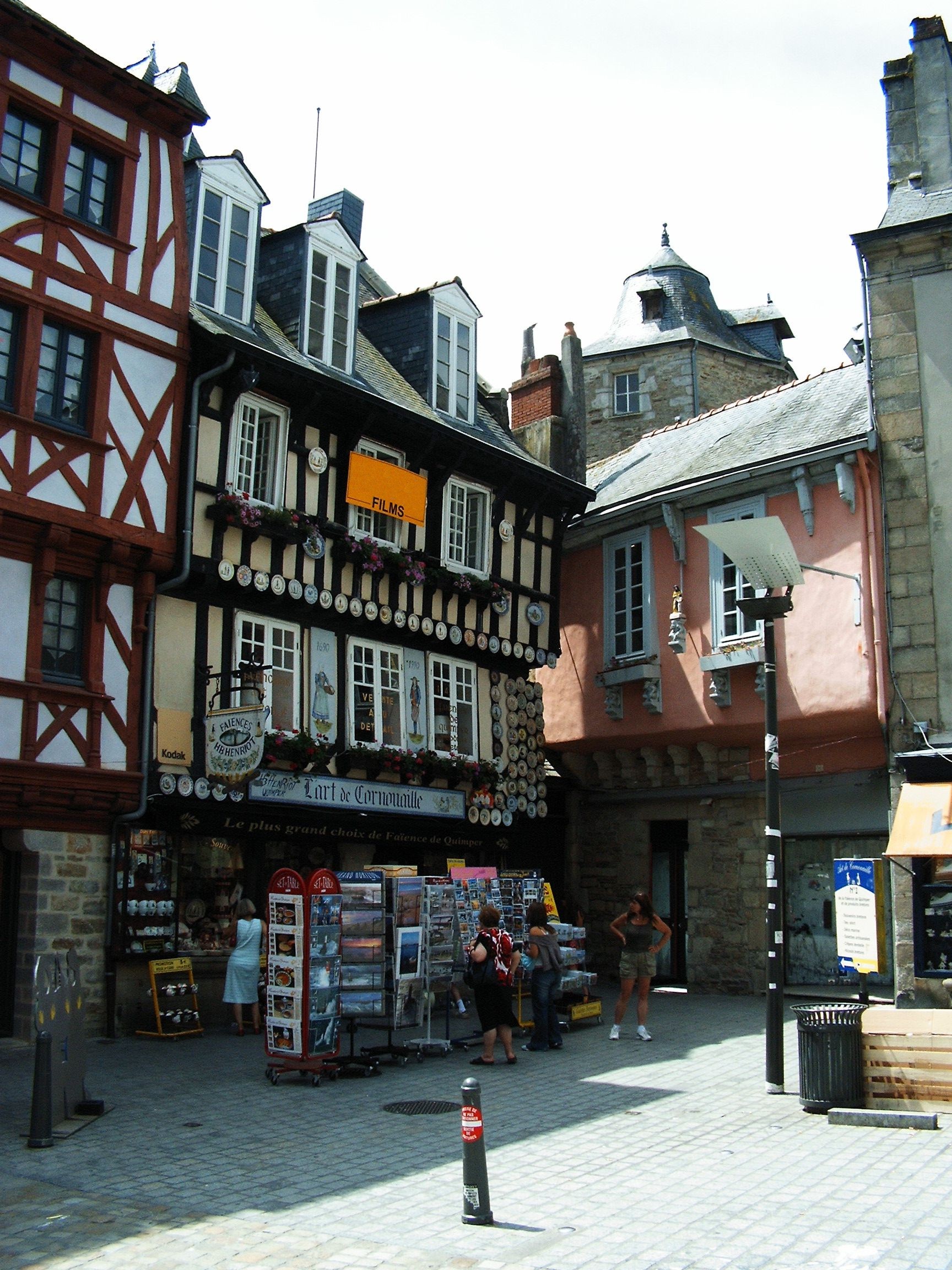|
Alain Of Quimper
Saint Alain of Quimper (Alan in Breton) was the Bishop of Cornouaille and the fourth Bishop of Quimper. He is believed to have been born in the British Isles. He was Bishop in the sixth or seventh century. His existence is historically uncertain. The sources proving his existence are questionable. He is not included in the list of Quimper dating from the fourteenth century nor in that of Quimperlé Quimperlé (; ) is a commune in the Finistère department of Brittany in northwestern France. Geography Quimperlé is in the southeast of Finistère, 20 km to the west of Lorient and 44 km to the east of Quimper. Historically, it belon ... which gives the list of the first bishops of Quimper. On the other hand he is mentioned by Dom Lobineau in Breton and the Latin Hours in 1486 under the name of Alaini episcopi. Be that as it may, whether he lived or not, he is venerated in Brittany. [...More Info...] [...Related Items...] OR: [Wikipedia] [Google] [Baidu] |
Cornouaille
Cornouaille (; br, Kernev, Kerne) is a historical region on the west coast of Brittany in West France. The name is cognate with Cornwall in neighbouring Great Britain. This can be explained by the settlement of Cornouaille by migrant princes from Cornwall who created an independent principality founded by Rivelen Mor Marthou, and the founding of the Bishopric of Cornouaille by ancient saints from Cornwall. Celtic Britons and the settlers in Brittany spoke a common language, which later evolved into Breton, Welsh and Cornish. Etymology The toponym Cornouaille was established in the early Middle Ages in the southwest of the Breton peninsula. Prior to this, following the withdrawal of Rome from Britain, other British migrants from what is now modern Devon had established the region of ''Domnonea'' (in Breton) or ''Domnonée'' (in French) in the north of the peninsula, taken from the Latin ''Dumnonia''. The region was first mentioned in surviving records by a ''Cornouaille'' ... [...More Info...] [...Related Items...] OR: [Wikipedia] [Google] [Baidu] |
Bishop Of Quimper
The Diocese of Quimper (–Cornouaille) and Léon (Latin: ''Dioecesis Corisopitensis (–Cornubiensis) et Leonensis''; French: ''Diocèse de Quimper (–Cornouaille) et Léon'') is a Latin Church ecclesiastical territory or diocese of the Catholic Church in France. In 1853, the name was changed from the Diocese of Quimper (–Cornouaille) to the Diocese of Quimper (–Cornouaille) and Léon. Originally established in the 5th century, the diocese was dismantled during the anti-clericalism of the French Revolution. It was restored by the Concordat of 1801, as the combination of the Dioceses of Quimper, Saint-Pol-de-Léon and Tréguier in Brittany, France. Traditionally, it formed part of Lower Brittany; today's diocese is coextensive with the Department of Finistère. The diocese is a suffragan diocese in the ecclesiastical province of the metropolitan Archdiocese of Rennes, Dol, and Saint-Malo. The current bishop is Laurent Marie Bernard Dognin. History Diocese of Quimper: ea ... [...More Info...] [...Related Items...] OR: [Wikipedia] [Google] [Baidu] |
Quimper
Quimper (, ; br, Kemper ; la, Civitas Aquilonia or ) is a commune and prefecture of the Finistère department of Brittany in northwestern France. Administration Quimper is the prefecture (capital) of the Finistère department. Geography The city was built on the confluence of the Steir, Odet and Jet rivers. Route National 165, D785, D765 and D783 were constructed to intersect here, northwest of Lorient, west of Rennes, and west-southwest of Paris. Climate Quimper has a oceanic climate (Köppen climate classification ''Cfb''). The average annual temperature in Quimper is . The average annual rainfall is with December as the wettest month. The temperatures are highest on average in August, at around , and lowest in February, at around . The highest temperature ever recorded in Quimper was on 30 June 1976; the coldest temperature ever recorded was on 13 January 1987. Etymology The name ''Quimper'' comes from the Breton ''kemper'', meaning "confluent". History Qui ... [...More Info...] [...Related Items...] OR: [Wikipedia] [Google] [Baidu] |
Quimperlé
Quimperlé (; ) is a commune in the Finistère department of Brittany in northwestern France. Geography Quimperlé is in the southeast of Finistère, 20 km to the west of Lorient and 44 km to the east of Quimper. Historically, it belongs to Cornouaille. The town is situated at the confluence of the Isole and Ellé rivers that combine to form the Laïta river, hence its name: confluent (kemper-) of the Ellé (-le). A fourth smaller river, the Dourdu (black water in Breton), joins the Laïta downstream. Quimperlé station has rail connections to Quimper, Lorient, Vannes and Rennes. The city is traditionally divided in two parts, the High Town and the Lower Town. The Lower Town, in the valley, is the historical centre, and developed around the Saint-Colomban church (of which only the front wall remains) and the abbey of Sainte Croix (Holy Cross). It covers the land between the Ellé and Isole rivers as well as the banks of the Laïta, an area that is sometimes flooded. Th ... [...More Info...] [...Related Items...] OR: [Wikipedia] [Google] [Baidu] |
Bishops Of Quimper
A bishop is an ordained clergy member who is entrusted with a position of authority and oversight in a religious institution. In Christianity, bishops are normally responsible for the governance of dioceses. The role or office of bishop is called episcopacy. Organizationally, several Christian denominations utilize ecclesiastical structures that call for the position of bishops, while other denominations have dispensed with this office, seeing it as a symbol of power. Bishops have also exercised political authority. Traditionally, bishops claim apostolic succession, a direct historical lineage dating back to the original Twelve Apostles or Saint Paul. The bishops are by doctrine understood as those who possess the full priesthood given by Jesus Christ, and therefore may ordain other clergy, including other bishops. A person ordained as a deacon, priest (i.e. presbyter), and then bishop is understood to hold the fullness of the ministerial priesthood, given responsibility b ... [...More Info...] [...Related Items...] OR: [Wikipedia] [Google] [Baidu] |

